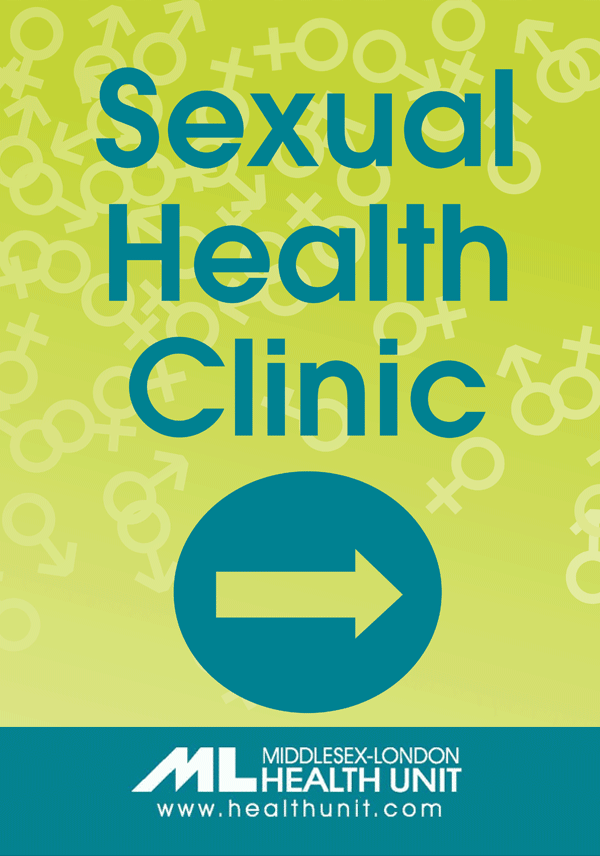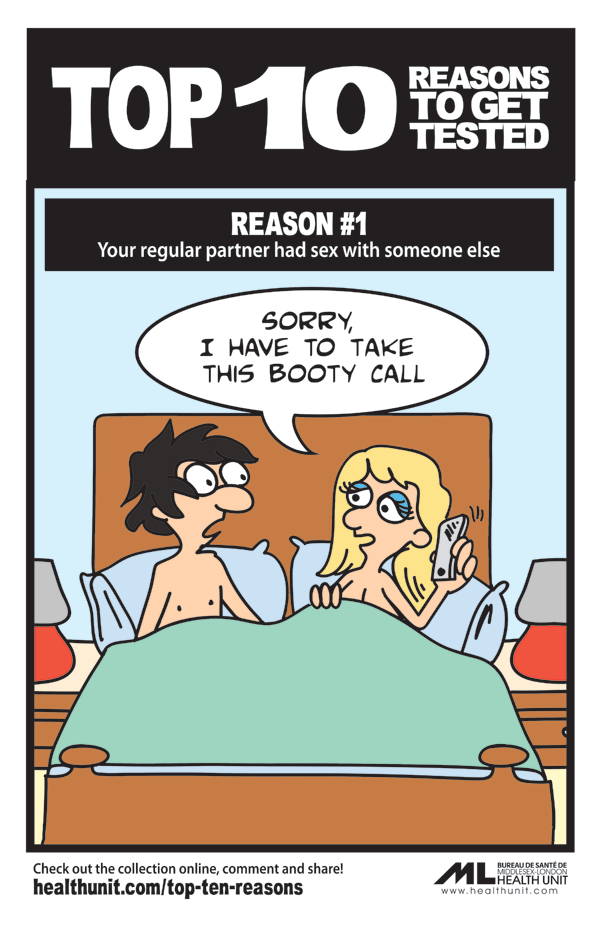 The Clinic
The Clinic
The Clinic offers a confidential and non-judgemental atmosphere where you can get answers to your sexual health questions. Top 10 Reasons to Get Tested
Top 10 Reasons to Get Tested
View the top 10 reasons to get tested for sexually transmitted infections (STIs). Ask a Question
Ask a Question
We respond as quickly as possible, typically within the week. If it’s urgent, contact your healthcare provider.
Condoms
GET IT ON! Using a condom helps prevent the spread of chlamydia and other STIs. FREE condoms are available from the MIddlesex-London Health Unit, student health services at Western University and Fanshawe College, and on most floors at student residence.
How it works
The external condom is a soft cover made from latex or polyurethane (a thin, non-latex plastic) that fits over the erect penis to prevent the exchange of body fluids. It can be used for vaginal, anal or oral sex.
- Fits over the erect penis
- Prevents direct contact between the penis and the vagina, anus or mouth
- Traps the sperm in the condom so it cannot fertilize the egg
- Reduces but does not eliminate the spread of sexually transmitted infections (STIs) and human immunodeficiency virus (HIV)
Advantages
- Free at your local public health unit or from the Middlesex-London Health Unit.
- Free from student health services at Western University and Fanshawe College, and on most floors at student residence.
- Available without a prescription
- Costs less money than other birth control methods
- No hormones
- Available in different shapes, colours, and flavors
- Condoms help prevent the spread of chlamydia and other STIs
- Only birth control method for the male partner
- May help to prevent early ejaculation
Considerations
- Must be available at the time of sex
- Must be stored in a cool dry place and handled properly
- Requires high motivation to use it correctly each time you have sex
- May slip or break during sex
- Condoms expire
- May reduce sensitivity for either partner
- Lambskin condoms and condoms labelled for novelty use are not recommended
- The use of a water based lube can reduce friction during vaginal and anal sex and reduces the risk of a condom breaking
How to use a condom
- Check expiry date
- Pinch the tip of the condom to create a space to collect semen and roll the condom down the entire shaft of the penis. If uncircumcised, pull back the foreskin.
- Use water based lube only (the more slippery the condom the less likely it is to break or come off during sex)
- Soon after ejaculation (cumming) hold the condom at the base so it won’t slip off and pull out holding onto the base of the penis and the condom
- Throw the condom in the garbage, not the toilet
- Remember to use a new condom if switching from one sex act to another (i.e. from oral to vaginal sex) regardless of ejaculation
OHIP+
Starting April 1, 2019, the government is focusing OHIP+ benefits on children and youth who do not have a private plan. Children and youth 24 years of age and under who are OHIP-insured, but who do not have a private plan, will continue to receive coverage for eligible prescription medications through OHIP+.
Learn more →
More Information
For more information, please call The Clinic at 519-663-5317.
Last modified on: March 5, 2024
Resources
References
http://www.sexualityandu.ca
